
The Galápagos Islands: underwater in a giant aquarium
As an underwater sanctuary for marine life, the Galápagos archipelago is one of the sites most cherished by divers, who are privileged to encounter not only colorful fish, but also sea lions, tortoises, hammerhead sharks, penguins, and whales in a virtually untouched environment. There is scuba diving for novice and advanced divers, and snorkeling for everyone.
By Julián Varsavsky
We fly 600 miles out to sea off the Ecuadorian coast. The airplane window shows me the arid island of Baltra and a runway that borders the aquamarine Pacific. We have landed in the Galápagos Islands, but instead of tropical exuberance, we are faced with an expanse of reddish, rocky desert complete with cactus. We hop a boat to Santa Cruz Island, where a bus takes us to the town of Puerto Ayora. Over the course of 45 minutes, the scenery begins to resemble the popular image of these isles, where Charles Darwin sketched out his theory of evolution: the road is lined with banana plantations interspersed with palm trees. We get our first look at the long-lived —up to 150 years— Galápagos tortoises grazing like cows.
I settle in at Puerto Ayora and walk down Darwin Street to the dive agencies. My beginner-level PADI diving certification allows me to dive to 60 feet (medium difficulty).
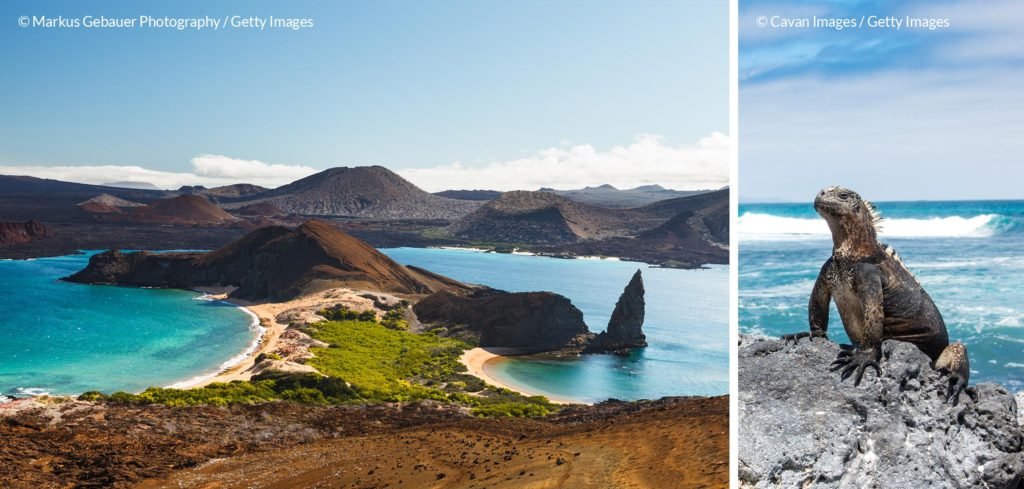
Underwater ecstasy
We take a boat from Santa Cruz Island to the Seymour Islands and put on wetsuits and air tanks for our first dive. Forty-five minutes later, we’re in the water. We three divers and a guide touch bottom in fifteen minutes. As I rest my hands on white sand 72 feet under the sea, I get used to feeling horizontal in the water. The only sound is that of my own breathing and bubbles rising.
I flutter my feet gently to glide forward like a slomo Superman. Looking up, the surface of the water seems like another sky below the sky. The sun’s rays hit the water at a slant, clearly defined among the thousands of fish that look black against the backlighting. Beneath me, red sea stars glow on the bottom as if scattered around a third sky.
What looks like a grove of dark, elastic sausages rises from the sandy bottom to dance in the current; I approach what I think is a patch of plants. When I’m about six feet away, the “plants” sink into the sand and disappear. These harmless garden eels spend their lives buried here like plant stalks, emerging to feed and breed. I swim over the ophidians’ home and glance back; they emerge in unison, as if mocking me.
I take stock of a dazzling environment with more than thirty feet of limpid visibility. To the right, a shoal of blue fish with yellow tails comes close enough to nearly touch my hand. Further ahead, another school zigzags like a thousand silver arrows. Some five yards to the left, a cloud of bluefin trevallys are playing follow the leader. Still further along, three shoals drift by. One of them consists of Moorish idols, whose pointed dorsal fin is double the length of the fish. These are actually the fish that everyone knows and loves from Finding Nemo.
A blacktip shark speeds by, cutting through the shoal. The shoal regroups immediately, as if the fish were magnetic. Shoals of fish flit around me like colorful hot-air balloons in a mad race. I feel like an extraterrestrial skimming through a dream underworld of surreal creatures.
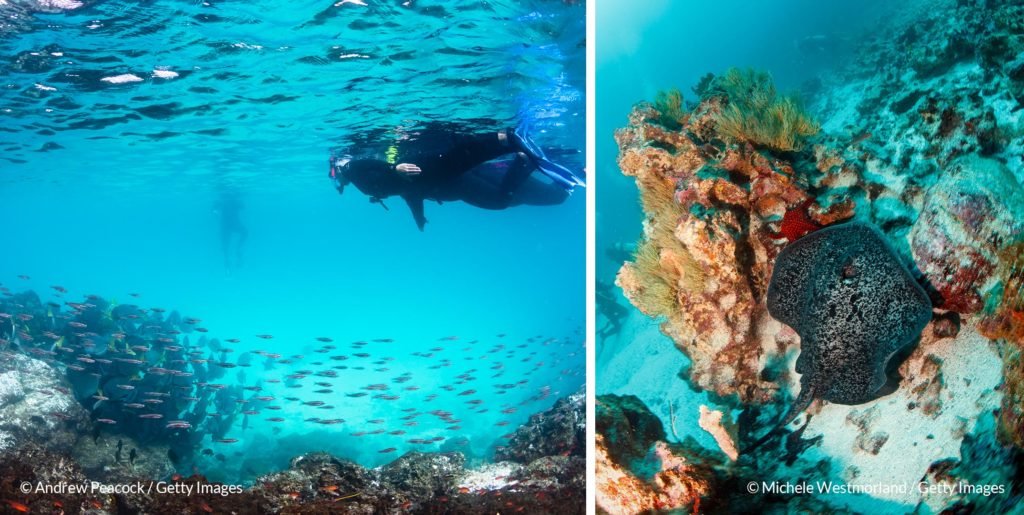
Snorkeling in Las Grietas
During these two weeks dedicated to marine life, I devote five days to the less complicated activity of snorkeling. My favorite place is Las Grietas, slightly over a mile from Puerto Ayora on the island of Santa Cruz. A launch drops us on the island for the sum of eighty cents. You’ll need to bring your own food and water, though. I’m left near the untouched Los Alemanes beach, where I set off down a rocky trail. About twenty marine iguanas saunter across my path on the way to Las Grietas, where the earth splits open into an elongated 26-foot wide fissure that reveals a turquoise waterway made of groundwater and sea water.
I leave my clothes on a rock and walk to the edge of the water where I can see the V-shaped fissure 32 feet down. I’m the only one here. I dive down, distorting the pristine mirror of the water. I adjust my mask. Silvery iridescent shoals appear as soon as I put my face in the water. The most colorful is the greenish parrotfish, which lives among the rocks. A monster reminiscent of a dinosaur swims toward me; it is merely a marine iguana slowly snaking downward in search of seaweed.
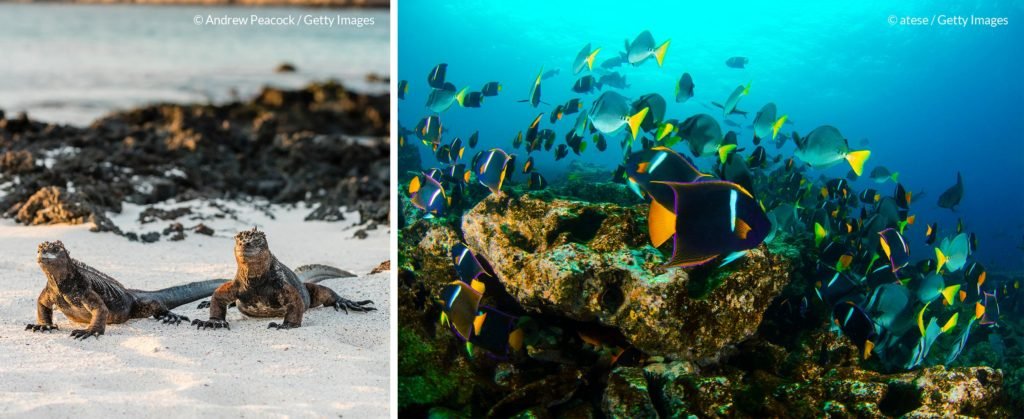
Dances with sea lions
I continue on to San Cristóbal to explore the southern part of the archipelago. I’m off to swim with the sea lions. You can hear them as soon as you disembark on the island. I walk into the sea through the gentle waters of an inlet. Young sea lions soon approach; their heads pop up to inspect me and then disappear under water. A bold sea lion comes face to face with my mask. They use their snouts like hands and they nibble on my swim fins. A little sea lion befriends me: it follows me everywhere, turns circles, and disappears for a few seconds. It reappears behind me and we swim in tandem for a glorious ten minutes.
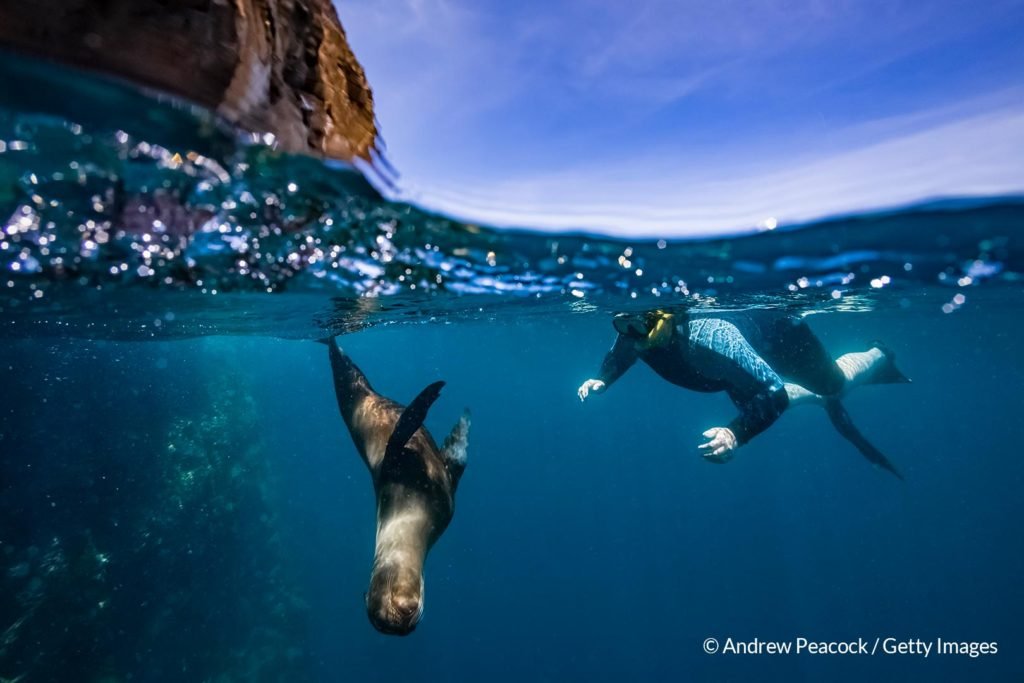
A walk through the tunnels
The following day, we board a boat on Isabela Island and head to what seem to be the ruins of a giant zig-zagging wall —six feet high and 2,625 feet long—poking out of the water. This is Los Túneles (The Tunnels), a formation of lava ejected from the bowels of the sea; behind me are the active Cerro Azul and Sierra Negra volcanoes. We float in calm shallow waters as sea turtles and thousands of fish chase and flee under our boat.
We disembark to walk through labyrinthine “lava tube” formations. Tortoises and Galápagos penguins, the smallest penguin species in the world, rest on the rocky ledges. Some of the walls look like bridges. We jump into the water to snorkel, and the guide points out ten whitetip sharks resting on the sea bed. I know they won’t attack, but even so, I hightail it out of there.
In front of me, I spot a king angelfish with curved pointed fins sporting a palette of colors that shades from soft orange to sapphire blue with yellow dots and a white stripe; a seahorse grasping a branch with its curved tail gallops away upright. A sea turtle some three feet long approaches, makes a half turn, and brushes me with a foot. I have seen so many that they seem as common as weeds. Not so commonly, a penguin shoots by like a torpedo, leaving a wake of bubbles.
The guide says it’s time to go. This is my last day and I might never be back here. I pretend not to hear. Fate grants me the wonder of a love dance by a pair of manta rays. I notify the others and we watch together. Two individuals nearly five feet wide swim joined at the side until they shift to a front-to-front posture —bodies fused together— and begin a nuptial ballet three feet under water. The flying lovers flipper, tracing circles in the water. They spiral and seem to embrace. The underwater ecstasy —theirs and ours— lasts five minutes. They abruptly pull apart and go their separate ways.
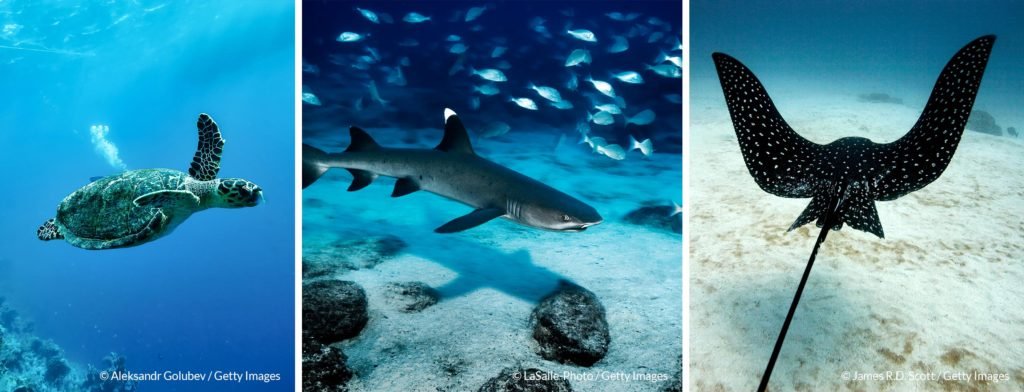
Information
The ocean is choppier from July to December. Boat rides last up to one and half hours; it’s a good idea to have motion sickness medication on hand. From January to June, the water temperatures varies from 68 to 75 F, and from 64 to 73 F between July and December.
Even if the focus of your trip isn’t div- ing, anyone can snorkel. Even those without a dive certification can jump right in, descending up to forty feet.
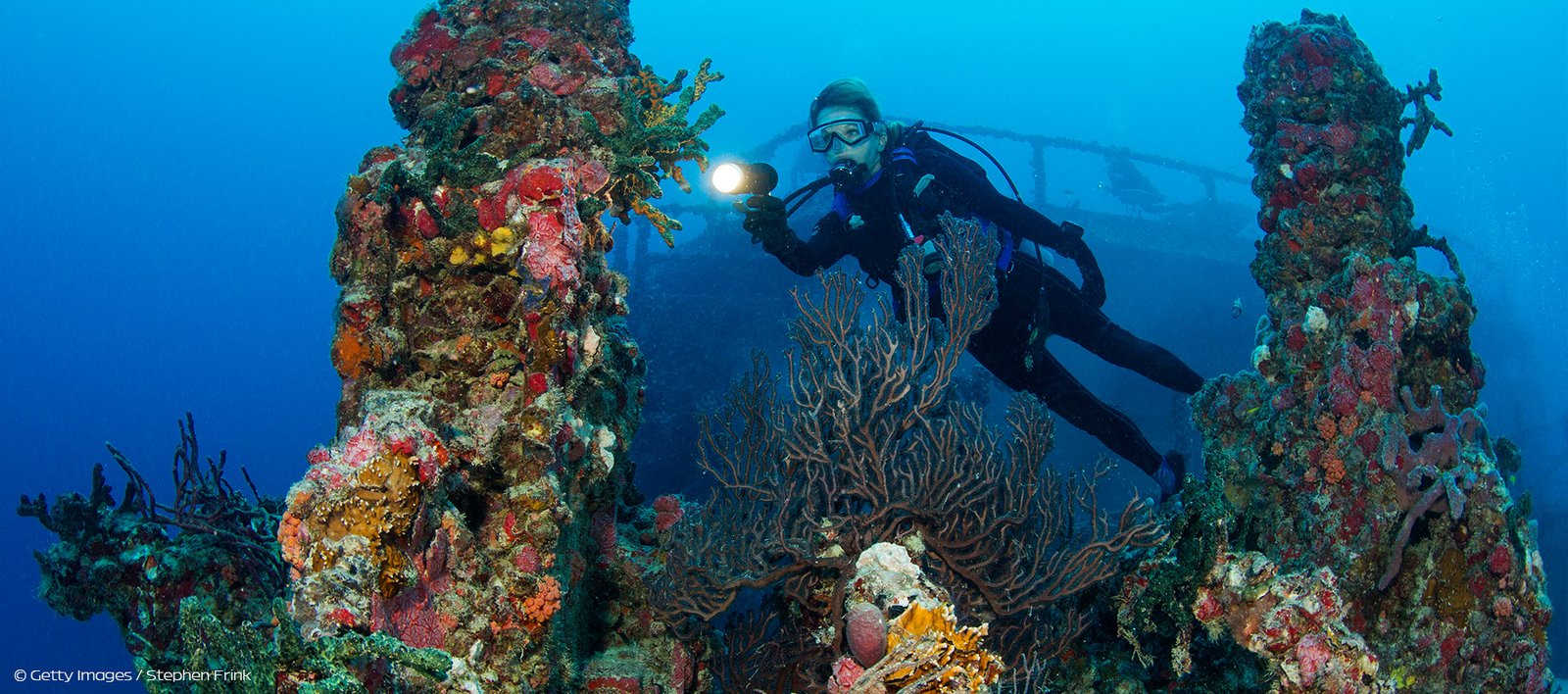
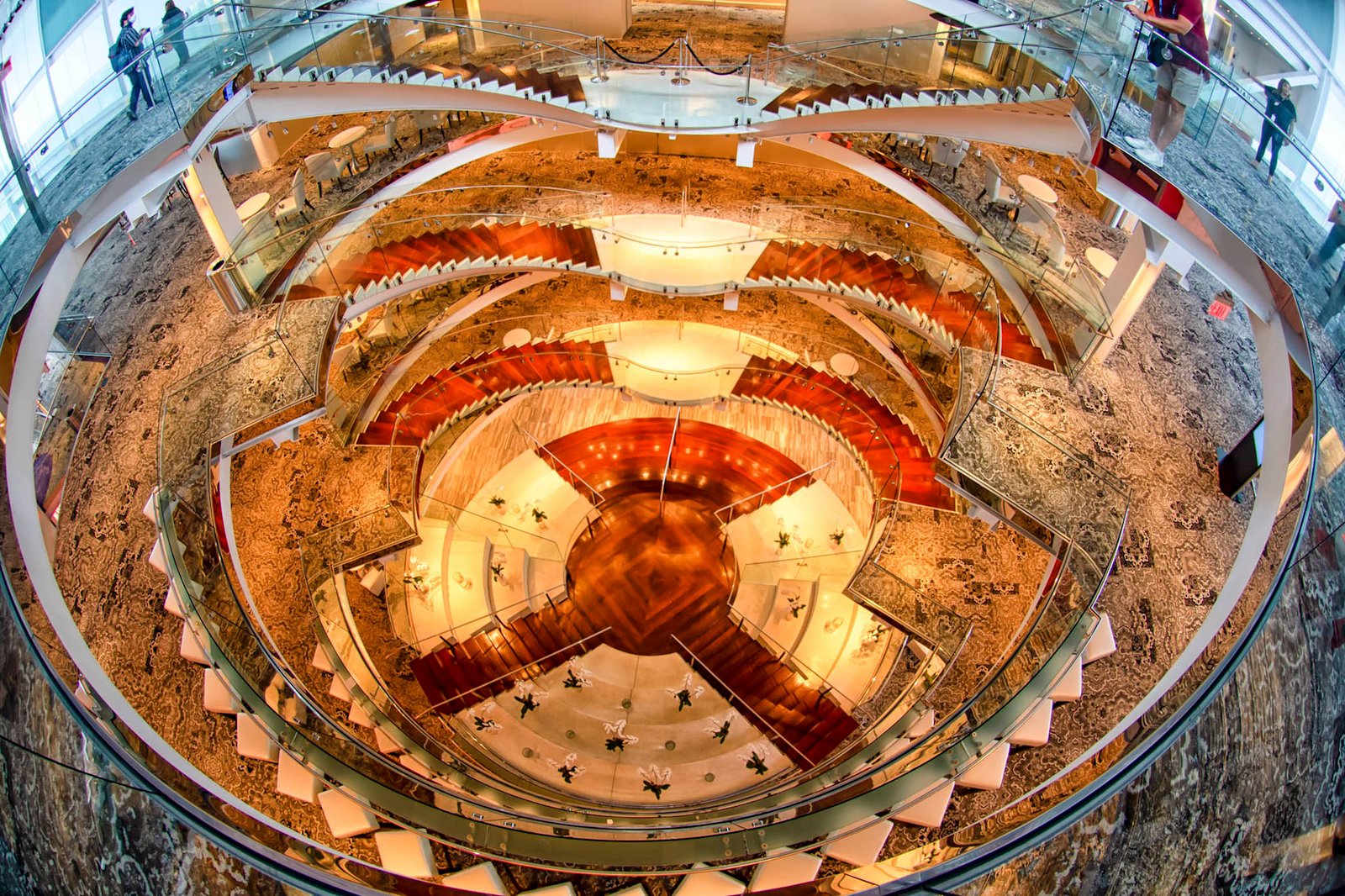

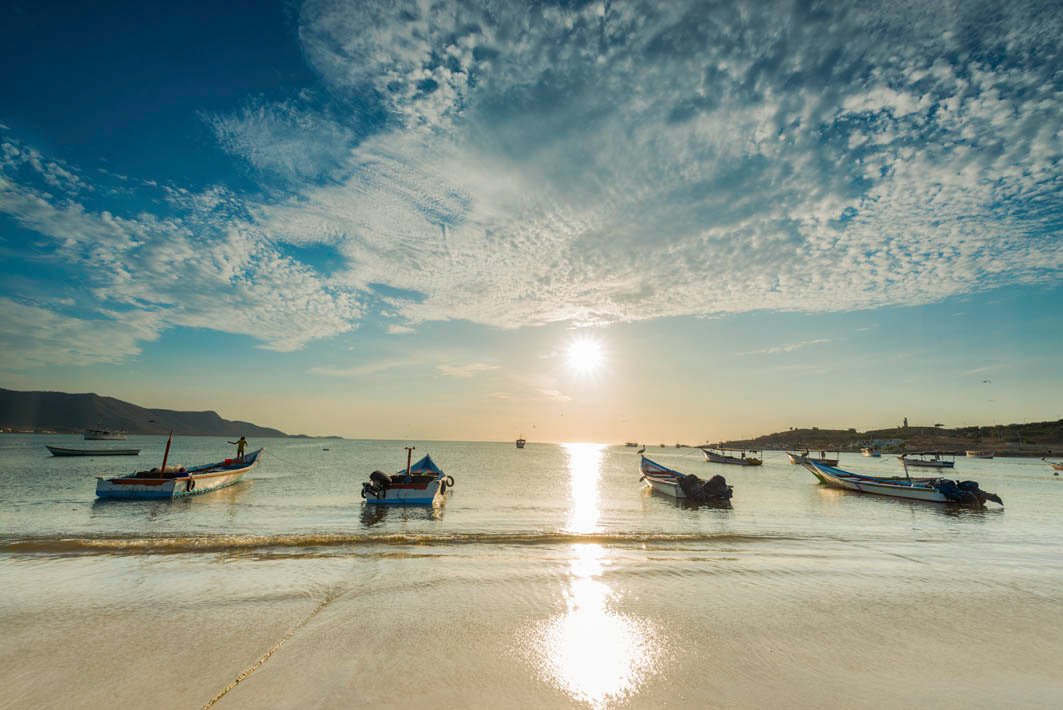
Leave a Reply